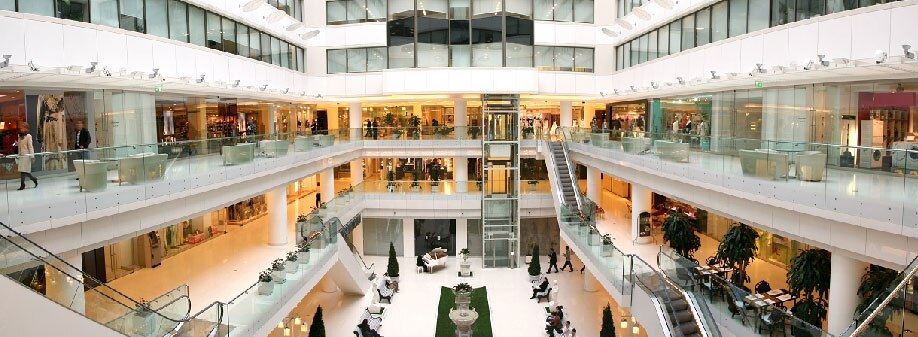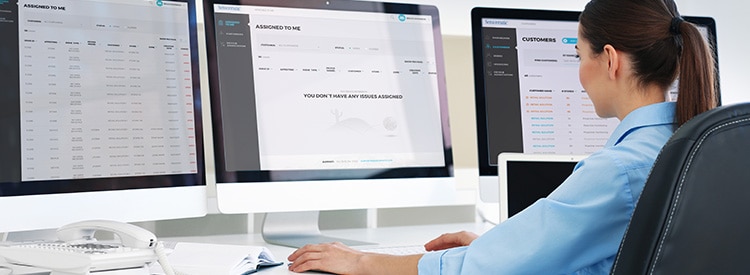Article
Shopping malls still win using retail traffic data

The European shopping centre sector is celebrating a new landmark. Westfield London has just become the largest shopping centre in Europe, having cut the ribbon on phase one of its chic £600m extension this March. When all stages of the extension are complete, the centre will cover 2.6 million square foot — overshadowing existing mall giants Aviapark in Moscow, and the Westgate shopping city in Zagreb. Fully embracing ‘experiential retailing’ Westfield London’s larger footprint has allowed it to become “a place to shop, to do, and learn,” according to Retail Week magazine.
Extensions like this are being undertaken across Europe as the mature mall market responds to changing consumer needs and expectations. Landlords are investing in upgrades and refurbishments to keep interest in physical shopping alive, often factoring in more social space for dining, events and leisure activities, to complement retail. Entertainment elements are being added such as indoor golf, cinemas and climbing walls, while space is being created for a wider tenant mix that will draw the crowds. For instance, Westfield London can now boast additional fashion brands and a smart new John Lewis department store, while Westfield Square — a new public events space surrounded with shops, dining and leisure outlets — will open in the summer.
Insight-driven decisions are shaping malls
Adapt or die is the underlying mantra. To remain relevant and competitive, most modern shopping centre portfolios in Europe acknowledge the vital role traffic data plays in ensuring leasing strategy and marketing campaigns are aligned to customer needs, and really delivering results. There’s a hunger for data that will prove whether or not investments are paying off. With traffic counting technology and data analytics systems in place owners can measure and react to key data findings, ensuring decisions are based on an accurate understanding of what is happening on the ground.
This is a key theme explored in a new ShopperTrak report Leverage Traffic Data to Boost Mall Performance. It looks at how traffic data can be used in numerous ways to improve profitability for property owners, and to put them in the best possible position to support their retail tenants.
Here’s a useful summary of the types of data insight that can benefit shopping centres, as outlined in the report:
How traffic data drives shopping centre profitability
- Shopping centre management and tenants can be fully prepared for known calendar peaks, and able to focus on boosting conversions on key dates.
- Tenants can be briefed on when to expect weekly or daily power hours, or traffic surges driven by collaborative mall events.
- Malls can be designed to maximise traffic hotspots and traffic flow, ensuring the layout and tenant mix are as profitable as possible.
- Marketing initiatives can be fine-tuned in line with measured traffic trends over time.
- Landlords can make the case for leasing charges based on traffic data, and can prove to tenants that improvements to the mall are delivering results in the form of higher traffic.
- Retailers can make decisions based on traffic and demographic data provided by the mall owner.
- Decisions regarding upgrades, extensions and additions — for example a new food court — can be made based on data analytics, and lease charges adapted accordingly.
- Retailers are more likely to commit to longer leases if property owners can demonstrate the current and projected traffic numbers.
Traffic data validates rent levels
Clearly traffic data can play a vital part in shopping centre planning and ongoing management. For landlords, being able to demonstrate traffic projections is extremely powerful — both as a service to tenants, and as a tool in the lease negotiation process.
Steve Richardson, ShopperTrak’s UK/UAE Regional & Global Strategic Accounts Director, comments in the report: “Property owners are collecting much more data than they did in the past. They want solutions that will help them select the right tenants, and demonstrate to tenants what kinds of revenues they can expect. These insights can also help them structure and justify rental levels.”
Time will tell whether the millions spent on extending Westfield London will deliver long-term profitability for the owner Westfield Group, and its carefully chosen tenant mix. Ideally when investments are made in any mall, shoppers flock, store traffic numbers rise, and average dwell times rocket. The outcome is delighted tenants and landlords furnished with a good news story to share with stakeholders. Far from fading from view, European shopping centres can remain busy and buzzing with excitement as the years roll on, if the right decisions to adapt are made, and innovative new concepts managed and nurtured with care.
On the solid foundations of ongoing data analytics, it’s possible to build a winning strategy to survive. The shaky ground of guesswork and gut feeling must be a thing of the past.
Contact us today for a demonstration on how traffic data can improve leasing models, and boost profitability in your shopping centres.
Download the report, Leverage Traffic Data to Boost Mall Performance, to see how leveraging shopper traffic data can improve mall profitability.
Explore Related Topics

Ready to see how Sensormatic Solutions can transform your bottom line?
Contact UsStay one step ahead with our articles, insights and latest news.
See more

Sensormatic News Desk

